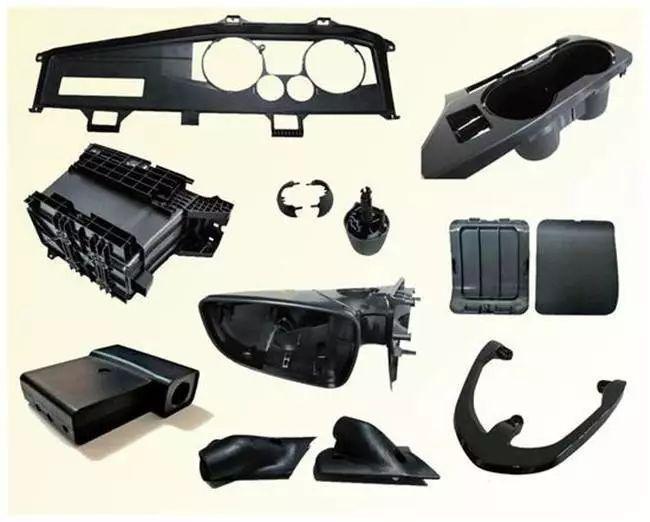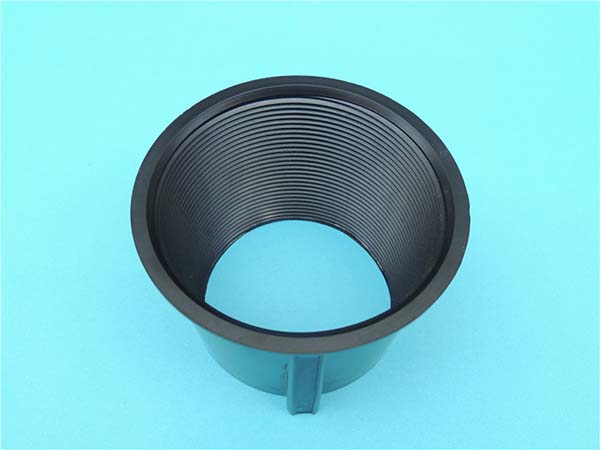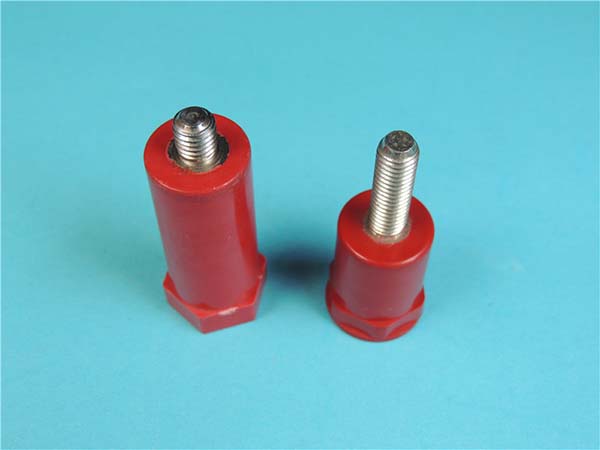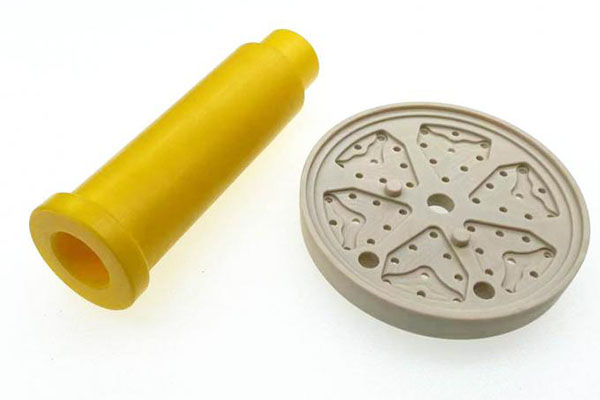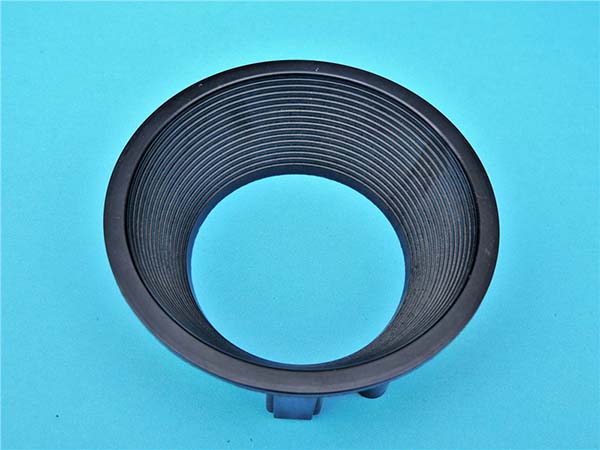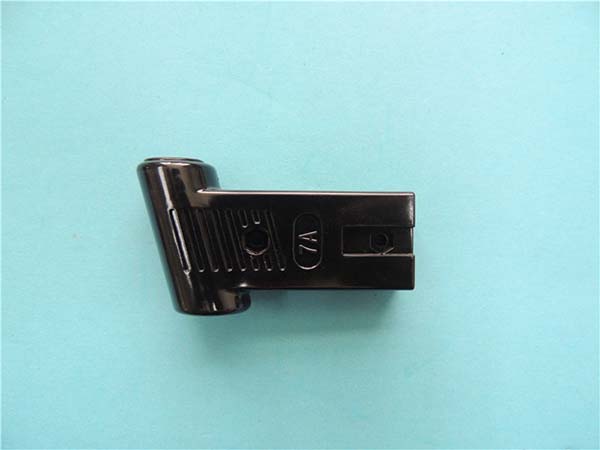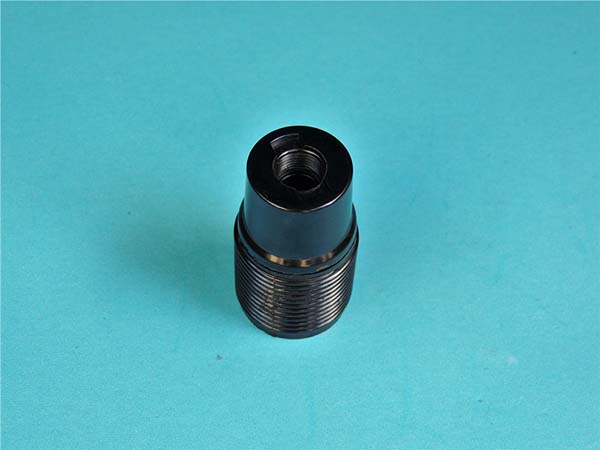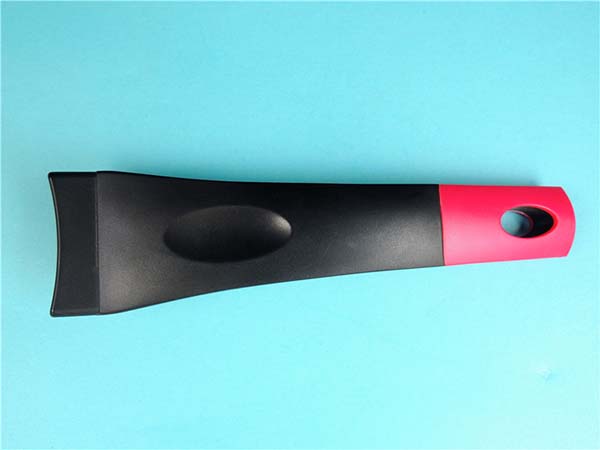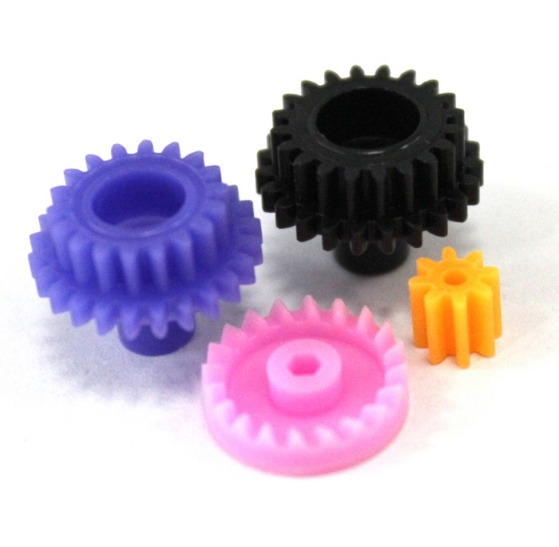Introduction
The Significance of Custom Plastic Manufacturing
In today's rapidly evolving industrial landscape, custom plastic manufacturing has emerged as a cornerstone for a wide range of industries. Its importance lies in its ability to provide tailored solutions that meet the unique requirements of diverse applications.
For the automotive industry, custom plastic parts are crucial. They not only contribute to vehicle lightweighting, which in turn improves fuel efficiency and reduces emissions, but also play a significant role in enhancing the overall design and functionality of vehicles. For instance, customized plastic interior components can be designed to fit perfectly into the vehicle's layout, providing a more comfortable and aesthetically pleasing environment for drivers and passengers. According to a study by the Society of Plastics Engineers, the use of plastics in automotive applications has been steadily increasing, with an average vehicle now containing over 300 pounds of plastic components, accounting for about 10 - 15% of its total weight. This trend is expected to continue as automakers strive to meet stricter fuel - efficiency standards and consumer demands for more innovative vehicle designs.
In the medical field, the need for precision and biocompatibility makes custom plastic manufacturing indispensable. Custom - made plastic medical devices, such as prosthetics, surgical instruments, and diagnostic equipment components, are designed to meet the specific needs of patients and medical professionals. These devices must adhere to strict regulatory standards to ensure patient safety. For example, a custom - fit prosthetic limb can provide a better quality of life for amputees by offering a more comfortable and functional replacement. The global market for medical plastics is projected to reach $64.5 billion by 2026, growing at a CAGR of 7.2% from 2021 to 2026, driven by factors such as an aging population, increasing prevalence of chronic diseases, and advancements in medical technology.
The electronics industry also benefits greatly from custom plastic manufacturing. Custom plastic enclosures and components are designed to protect sensitive electronic components, provide proper heat dissipation, and meet the sleek and compact design requirements of modern electronics. With the continuous miniaturization of electronic devices, the demand for high - precision custom plastic parts has never been higher. For example, the casings of smartphones and tablets are often made of customized plastics that are not only lightweight but also offer excellent durability and shock resistance.
Custom Manufacturing Process
Design Collaboration
Understanding Customer Needs
At our plastic fabrication company, we believe that a deep understanding of customer needs is the foundation of successful custom manufacturing. Our team of experienced engineers and designers initiates in - depth communication with customers from the very beginning. We use a variety of methods to ensure we capture every detail of their requirements. This includes one - on - one meetings, where we can have face - to - face discussions, ask clarifying questions, and gain a better understanding of the customer's vision. For example, if a customer is in the aerospace industry and needs custom plastic parts for an aircraft interior, we'll discuss aspects such as the specific aircraft model, the intended function of the parts (e.g., is it for seating components, overhead storage, or something else), and any aesthetic or ergonomic considerations.
We also use detailed questionnaires to gather comprehensive information. These questionnaires cover aspects like the environmental conditions the plastic parts will be exposed to, the required lifespan of the product, and any budgetary constraints. By combining these communication methods, we ensure that no detail is overlooked, setting the stage for a smooth manufacturing process.
CAD/CAM Design Support
Once we have a clear understanding of the customer's needs, we leverage the power of CAD (Computer - Aided Design) and CAM (Computer - Aided Manufacturing) technologies. Our CAD software allows us to create highly detailed 3D models of the custom plastic parts. These models are not only a visual representation of the final product but also a powerful tool for design analysis. For instance, we can perform stress analysis on the 3D model to ensure that the plastic part can withstand the expected loads during its intended use.
With CAM, we can generate precise toolpaths for our manufacturing equipment. This seamless integration of CAD and CAM ensures that the design concept is accurately translated into a physical product. The 3D models created in the CAD stage can also be easily shared with customers, allowing them to review and provide feedback before the actual production begins. This reduces the risk of costly design changes during the manufacturing process. According to industry statistics, companies that use CAD/CAM technologies in their design and manufacturing processes experience a 30 - 40% reduction in design errors and a 20 - 30% increase in production efficiency.
Prototyping and Testing
Rapid Prototyping
After the design phase, we move on to rapid prototyping. Our state - of - the - art rapid prototyping equipment enables us to quickly produce a physical model of the custom plastic part. The process typically involves using additive manufacturing techniques, such as 3D printing, to build the prototype layer by layer. This allows us to rapidly iterate on the design, making changes based on customer feedback or internal testing.
The benefits of rapid prototyping are numerous. First and foremost, it allows us to quickly validate the design concept. We can check for form, fit, and function of the prototype, ensuring that it meets the customer's requirements. For example, if a customer needs a custom - designed plastic housing for an electronic device, we can print a prototype and test if all the components fit correctly inside the housing. It also significantly reduces the time and cost associated with traditional prototyping methods. According to a study by the American Society of Mechanical Engineers, rapid prototyping can reduce the prototyping time by up to 80% compared to traditional methods, allowing for faster product development cycles.
Rigorous Testing
Once the prototype is ready, we subject it to a series of rigorous tests to ensure its quality and performance. We conduct mechanical tests, such as tensile testing, to measure the part's strength and durability. In a tensile test, we pull on the plastic sample until it breaks, recording the maximum force it can withstand. This data helps us determine if the plastic material and design are suitable for the intended application.
We also perform chemical resistance tests, especially if the plastic part will be exposed to chemicals in its operating environment. For example, if the part is for use in a chemical processing plant, we'll test its resistance to various acids, alkalis, and solvents. Additionally, we conduct environmental tests, such as temperature and humidity cycling, to simulate the real - world conditions the part will face. These tests are carried out in accordance with international standards, such as ISO and ASTM, ensuring that our products meet the highest quality requirements.
Production and Quality Control
High - Volume Production
Our plastic fabrication company is equipped with advanced manufacturing facilities that enable high - volume production. We have a fleet of injection molding machines, extrusion lines, and other specialized equipment, all of which are maintained to the highest standards to ensure optimal performance. Our production process is highly efficient, with a well - organized workflow that minimizes production bottlenecks.
For example, in our injection molding operations, we use automated material handling systems to ensure a continuous supply of raw materials to the machines. This, combined with our skilled operators and efficient production scheduling, allows us to produce large quantities of high - quality plastic parts in a short period. We can handle production runs of thousands to millions of units, depending on the customer's needs. According to our internal data, our production capacity has grown by 20% over the past five years, thanks to continuous investment in new equipment and process improvements.
Stringent Quality Assurance
Quality is at the heart of everything we do. We have a comprehensive quality assurance program in place to ensure that every plastic part that leaves our facility meets the highest quality standards. Our quality control team is involved in every stage of the production process, from incoming raw material inspection to final product testing.
We use advanced inspection equipment, such as coordinate measuring machines (CMMs), to ensure that the dimensions of the plastic parts are within the specified tolerances. For each production batch, we conduct random sampling and perform a series of quality checks. If any defects are detected, we immediately take corrective actions, such as adjusting the manufacturing process or rejecting the defective parts. Our commitment to quality has earned us a reputation for reliability in the industry, with a customer satisfaction rate of over 95% based on our annual customer surveys.
Industry Applications
Aerospace
In the aerospace industry, every gram of weight reduction matters. Custom plastic parts play a vital role in achieving this goal. For example, in aircraft manufacturing, plastic composites are used to make various components such as interior panels, wingtips, and fairings. These plastic parts are significantly lighter than their metal counterparts. According to research by the American Institute of Aeronautics and Astronautics, replacing metal components with advanced plastic composites can reduce the weight of an aircraft by up to 20 - 30%. This weight reduction directly contributes to improved fuel efficiency, as the aircraft requires less fuel to overcome the force of gravity during flight. A lighter aircraft can also carry more payload, whether it's passengers, cargo, or additional equipment, enhancing its overall operational capabilities.
Plastic materials used in aerospace applications also need to meet strict safety and performance requirements. They must be able to withstand extreme temperatures, high - speed airflows, and intense vibrations during flight. For instance, high - performance engineering plastics like polyetheretherketone (PEEK) are often used. PEEK has excellent mechanical properties, high - temperature resistance (it can withstand temperatures up to 260°C continuously), and good chemical resistance, making it suitable for critical aerospace components.
Automotive
Plastic has become an essential material in modern automotive manufacturing. One of the primary applications of plastic in cars is in the production of interior components. Dashboards, door panels, and seat covers are often made from plastics. These plastics can be molded into various shapes and textures, providing automotive designers with greater flexibility in creating aesthetically pleasing and ergonomic interiors. For example, soft - touch plastics are used for areas that passengers frequently come into contact with, such as the steering wheel and armrests, to enhance comfort.
Plastics also contribute to vehicle safety. Many automotive safety components, like airbag housings, are made of plastic. These plastics are designed to be lightweight yet strong enough to withstand the high - speed deployment of airbags during a collision. Additionally, plastic bumpers are not only lighter than metal bumpers but also have better energy - absorbing properties. In a low - speed collision, a plastic bumper can deform and absorb the impact energy, reducing damage to the vehicle's frame and potentially reducing repair costs. According to the International Organization of Motor Vehicle Manufacturers, the use of plastics in automotive interiors and exteriors has increased by about 5% per year over the past decade, driven by the need for lightweighting, cost - reduction, and design innovation.
Medical
The medical field relies heavily on custom plastic manufacturing due to the unique properties of plastics. Biocompatibility is a crucial factor when it comes to medical applications. Plastics like polyethylene (PE), polypropylene (PP), and polytetrafluoroethylene (PTFE) are biocompatible, meaning they can be in contact with the human body without causing adverse reactions. For example, PTFE is commonly used in catheters and artificial grafts. Its smooth surface reduces the risk of blood clot formation, and its biocompatibility allows it to be safely inserted into the body's blood vessels.
Plastics are also easy to sterilize, which is essential in a medical environment. They can be sterilized using methods such as autoclaving (exposure to high - pressure steam), ethylene oxide gas sterilization, or gamma irradiation. This makes them suitable for a wide range of medical devices, from surgical instruments to implantable devices. The global market for medical plastics is booming, with an increasing demand for advanced medical devices. In the area of prosthetics, custom - made plastic prosthetics can be designed to fit the unique anatomy of each patient, providing a more comfortable and functional replacement limb. These prosthetics can be made from lightweight yet durable plastics, improving the quality of life for amputees.
Yigu Technology's Viewpoint
As a non - standard plastic metal products custom supplier, Yigu Technology firmly believes in the significance of custom manufacturing in the industry. We understand that each customer has unique requirements, and customization is the key to meeting these complex needs precisely.
In our experience, collaboration is crucial. By working closely with our clients, we can combine our technical expertise with their specific ideas. This not only results in high - quality products but also promotes innovation. For example, through in - depth communication, we have developed custom plastic - metal components that integrate the advantages of both materials, achieving better performance in terms of strength, corrosion resistance, and weight reduction.
We are committed to continuous improvement and innovation in the custom manufacturing process. By investing in advanced technology and training our team, we strive to provide more efficient and cost - effective solutions, ensuring that our customers stay competitive in their respective markets.
FAQ
Q1: What is the minimum order quantity for custom plastic fabrication?
The minimum order quantity (MOQ) for custom plastic fabrication varies depending on several factors. These include the complexity of the product design, the production process involved, and the type of plastic material used. For simple products with straightforward designs and using common plastic materials, the MOQ could be as low as a few hundred units. However, for highly complex products that require intricate molds or specialized production techniques, the MOQ might be in the thousands. For instance, if a customer needs a simple plastic storage box with a standard design, we could start production with an MOQ of 500 units. But if it's a custom - designed, high - precision plastic component for the aerospace industry with strict quality and design requirements, the MOQ could be around 2000 units. We always strive to work with our customers to find the most cost - effective solution, and in some cases, we may be able to accommodate lower quantities for prototype or small - scale production runs.
Q2: How long does the custom manufacturing process usually take?
The custom manufacturing process time is composed of several stages. The design stage, which involves understanding your needs, creating CAD models, and getting your approval, usually takes about 1 - 2 weeks. This allows for in - depth communication and multiple design iterations if necessary. The rapid prototyping phase, where we produce a physical model of the product for testing and validation, typically takes 3 - 5 days. Once the prototype is approved, the production stage begins. For small - scale production runs of a few thousand units, it may take 2 - 4 weeks, depending on the complexity of the product and the availability of raw materials. Larger production volumes can take 4 - 8 weeks or more. For example, if you order 5000 custom - made plastic parts for an electronics product, from the moment we receive your initial design concept to the delivery of the final products, the entire process could take approximately 8 - 10 weeks. Quality control checks are carried out throughout the process, which also contributes to the overall timeline.
Q3: Can you help with the design if I only have a rough idea?
Absolutely! Our company has a team of highly skilled and experienced designers who are experts in plastic product design. If you only have a rough idea, our designers will work closely with you to transform that idea into a detailed and feasible design. We start by having in - depth discussions with you to understand the functionality, aesthetics, and any specific requirements you have. Then, using advanced CAD software, we create 2D and 3D sketches to visualize the product. We'll also provide suggestions on materials, manufacturing processes, and cost - effective design improvements. For example, if you have a concept for a new plastic household item but are not sure about the exact shape or material to use, our design team will research different materials, consider factors like durability and ease of manufacturing, and present you with multiple design options. We'll guide you through every step of the design process, from the initial concept to the final detailed design, ensuring that the end - product meets your expectations.
